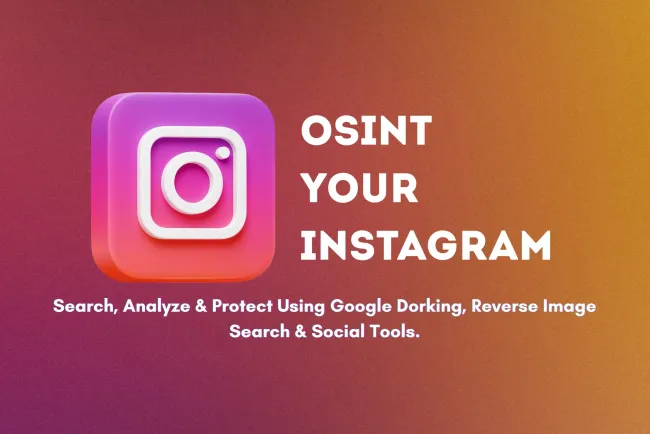How AI is Used in Social Engineering Attacks | Advanced Cyber Threats & Protection Strategies
Social engineering attacks have evolved significantly with the integration of Artificial Intelligence (AI), making them more sophisticated and difficult to detect. Cybercriminals now use AI-powered phishing emails, deepfake voice impersonations, and AI-driven chatbots to manipulate victims and steal sensitive information. AI also enhances open-source intelligence (OSINT) by gathering personal data to craft highly targeted attacks. This blog explores how AI is revolutionizing social engineering tactics, real-world examples of AI-driven cyber fraud, and the best cybersecurity strategies to defend against these advanced threats. By understanding AI-powered deception techniques and implementing AI-based security solutions, individuals and businesses can better protect themselves from evolving cyber risks.

Table of Contents
- Introduction
- What is Social Engineering in Cybersecurity?
- How AI is Transforming Social Engineering Attacks
- Real-World Examples of AI-Driven Social Engineering Attacks
- How to Defend Against AI-Powered Social Engineering Attacks
- The Future of AI in Social Engineering
- Conclusion
- FAQs
Introduction
Social engineering attacks have long been one of the most effective cyber threats, manipulating human psychology to trick individuals into revealing sensitive information. Traditionally, attackers relied on phishing emails, impersonation, and manipulation techniques. However, with the rise of Artificial Intelligence (AI), cybercriminals have found new and advanced ways to enhance social engineering tactics.
AI-driven social engineering attacks leverage machine learning (ML), natural language processing (NLP), deepfakes, and automated chatbots to make scams more sophisticated, scalable, and harder to detect. From AI-generated phishing emails to deepfake voice impersonations, AI is transforming cyber deception.
In this blog, we’ll explore how AI is used in social engineering attacks, common AI-driven tactics, real-world examples, and how individuals and organizations can defend against these threats.
What is Social Engineering in Cybersecurity?
Social engineering refers to manipulating people into providing confidential information or performing actions that compromise security. Unlike traditional hacking, which exploits technical vulnerabilities, social engineering exploits human psychology, such as trust, fear, and urgency.
Common traditional social engineering tactics include:
- Phishing emails impersonating trusted entities.
- Pretexting, where attackers create a fake scenario to extract information.
- Baiting, which lures victims into downloading malicious software.
- Impersonation and vishing (voice phishing) to manipulate victims.
AI has enhanced these attacks by automating and personalizing them, making them more convincing and effective.
How AI is Transforming Social Engineering Attacks
1. AI-Generated Phishing Emails & Messages
AI-powered phishing is far more convincing than traditional phishing. Attackers use Natural Language Processing (NLP) and Large Language Models (LLMs) like ChatGPT to:
- Create personalized phishing emails with flawless grammar and tone.
- Analyze previous email conversations to mimic a victim’s writing style.
- Automate spear-phishing campaigns targeting specific individuals or companies.
For example, business email compromise (BEC) scams use AI to generate emails impersonating a company’s CEO, tricking employees into transferring funds or sharing sensitive data.
2. Deepfake Voice & Video Impersonation
AI-powered deepfake technology allows cybercriminals to:
- Clone a person’s voice using a few seconds of recorded audio.
- Create fake video calls that impersonate CEOs, executives, or even family members.
- Conduct vishing (voice phishing) attacks where an AI-generated voice convinces employees to share passwords or authorize transactions.
In a real-world case, criminals used deepfake voice cloning to impersonate a CEO and tricked a company into transferring $243,000 to a fraudulent bank account.
3. AI Chatbots & Social Media Manipulation
Attackers use AI chatbots and automated social media bots to:
- Impersonate customer support agents to steal login credentials.
- Engage in long-term manipulation to gain trust before scamming victims.
- Spread fake news and misinformation to manipulate public perception.
For example, AI bots can create thousands of fake LinkedIn profiles to pose as recruiters, tricking professionals into revealing corporate secrets.
4. Automated OSINT (Open-Source Intelligence) Gathering
AI scrapes vast amounts of public data from social media, forums, and leaked databases to:
- Build detailed victim profiles for targeted attacks.
- Predict user behavior and preferences to personalize scams.
- Track online activity to find the best time to launch an attack.
For instance, AI-driven OSINT tools can scan a person’s Instagram, LinkedIn, and Twitter posts to craft hyper-personalized phishing messages.
5. AI-Powered Malware & Fake Websites
Cybercriminals use AI to create:
- AI-enhanced malware that adapts to security defenses.
- Fake websites that mimic real ones with high accuracy, tricking users into entering credentials.
- AI-driven CAPTCHA solvers to bypass security measures.
For example, AI-generated scam websites impersonate financial institutions, convincing victims to enter login details, which are then stolen.
Real-World Examples of AI-Driven Social Engineering Attacks
-
Deepfake CEO Fraud:
- In 2019, cybercriminals cloned the voice of a CEO using AI and tricked an employee into wiring $243,000 to a fraudulent account.
-
AI-Generated Phishing Campaigns:
- In 2023, phishing attacks powered by ChatGPT led to a 135% increase in targeted spear-phishing emails with near-perfect grammar and personalized messages.
-
Fake AI Chatbots on Social Media:
- Attackers deployed AI chatbots on WhatsApp and Telegram, impersonating bank representatives and scamming users into revealing OTPs (one-time passwords).
How to Defend Against AI-Powered Social Engineering Attacks
1. AI-Powered Threat Detection
- Use AI-driven security tools that detect anomalous behavior in emails, calls, and websites.
- Implement phishing detection software that scans emails for AI-generated patterns.
2. Multi-Factor Authentication (MFA)
- Require biometric authentication, one-time passwords (OTPs), and hardware security keys to prevent unauthorized access.
3. Employee & Personal Awareness Training
- Conduct cybersecurity training on AI-powered phishing and deepfake threats.
- Train employees to verify requests before taking action, especially for financial transactions.
4. Secure Social Media & Online Presence
- Limit public information sharing on LinkedIn, Twitter, and other platforms.
- Enable privacy settings to restrict what attackers can see.
5. Deepfake & Voice Authentication Tools
- Use deepfake detection AI to verify videos and voice recordings.
- Implement call-back verification for sensitive requests instead of relying on voice alone.
The Future of AI in Social Engineering
AI will continue to advance and reshape social engineering attacks. Future threats may include:
- AI-generated fake identities that look human and interact online.
- Fully automated phishing campaigns that adapt to user responses.
- AI-powered misinformation and manipulation on a mass scale.
At the same time, AI-driven cybersecurity solutions will evolve to detect and counter these threats in real time. Organizations and individuals must stay ahead by adopting AI-enhanced fraud detection systems and maintaining cyber awareness.
Conclusion
AI has supercharged social engineering attacks, making them more personalized, scalable, and difficult to detect. From AI-generated phishing emails to deepfake fraud, cybercriminals are leveraging AI to manipulate and deceive victims with unprecedented efficiency.
To stay protected, individuals and businesses must adopt AI-driven security measures, educate themselves on emerging threats, and implement multi-layered defenses.
As AI continues to evolve, cybersecurity awareness and proactive defense strategies will be key to combating AI-powered social engineering threats.
FAQs
What is AI in social engineering attacks?
AI enhances social engineering attacks by automating and personalizing scams, making them more convincing, scalable, and harder to detect.
How do cybercriminals use AI for phishing?
They use AI-generated phishing emails with near-perfect grammar and personalized content, making them difficult to recognize as fraudulent.
What is deepfake technology in cybercrime?
Deepfakes use AI to create fake videos and voice recordings, allowing attackers to impersonate executives, celebrities, or even friends and family.
Can AI mimic human conversations in scams?
Yes, AI chatbots and language models can mimic human speech patterns, tricking victims into revealing sensitive information.
How does AI improve social engineering attacks?
AI analyzes user data, personalizes messages, and automates attacks, increasing the success rate of phishing and impersonation scams.
What is AI-driven OSINT?
AI gathers public data from social media, forums, and breached databases to create detailed victim profiles for targeted attacks.
How are AI-generated fake profiles used in scams?
Attackers use AI to create realistic fake social media profiles, impersonating trusted individuals to manipulate victims.
Can AI clone voices for cyber fraud?
Yes, AI voice cloning technology can replicate a person’s voice using a few seconds of recorded audio, leading to scams like CEO fraud.
What is vishing, and how does AI make it worse?
Vishing (voice phishing) is when attackers use phone calls to scam victims. AI-powered vishing clones voices to sound like trusted individuals.
Are deepfake videos a cybersecurity risk?
Yes, deepfake videos can falsify evidence, impersonate people, and spread disinformation, posing major security risks.
How do AI chatbots scam people?
Attackers use AI-powered chatbots to pretend to be customer support agents, tricking users into sharing passwords or financial details.
Can AI-powered malware be used for social engineering?
Yes, AI-enhanced malware can adapt and learn from security defenses, making it harder to detect and remove.
What is AI-enhanced business email compromise (BEC)?
AI generates realistic emails impersonating CEOs or executives, tricking employees into wiring money or sharing sensitive data.
How do AI-powered fake websites work?
Attackers create AI-generated fraudulent websites that mimic legitimate ones, stealing login credentials and financial information.
Can AI be used to manipulate social media?
Yes, AI bots spread misinformation, create fake profiles, and influence public opinion on social media platforms.
How does AI help hackers bypass security measures?
AI can crack passwords, solve CAPTCHAs, and evade security filters, making traditional defenses less effective.
Can AI make phishing attacks undetectable?
AI can craft phishing emails that mimic real communication, making them almost indistinguishable from legitimate messages.
What industries are most at risk from AI-driven social engineering?
Finance, healthcare, government, and tech companies are prime targets due to their sensitive data.
How can businesses protect themselves from AI-based attacks?
Companies should use AI-powered security tools, multi-factor authentication, employee training, and deepfake detection software.
Are traditional cybersecurity measures enough to stop AI-powered scams?
No, traditional methods alone are not enough. AI-driven fraud detection and continuous monitoring are necessary.
How can individuals detect AI-generated phishing emails?
Look for subtle grammar inconsistencies, unexpected urgency, and verify links before clicking.
Can AI-generated scams be traced back to the attacker?
AI scams are harder to trace because cybercriminals use automated and anonymized AI tools.
What role does AI play in ransomware attacks?
AI helps cybercriminals identify high-value targets and optimize malware payloads for maximum impact.
Is AI being used for cyber defense as well?
Yes, AI-powered cybersecurity tools help detect phishing, malware, and fraudulent activities in real time.
How do AI-driven scams affect cryptocurrency security?
AI is used to create fake crypto exchanges, deepfake influencers, and automated crypto scams to steal digital assets.
Can AI predict and prevent social engineering attacks?
Yes, AI-powered cybersecurity can analyze attack patterns, predict threats, and block fraudulent activities before they happen.
Are AI-powered scams a growing threat?
Yes, AI is making scams more frequent, sophisticated, and difficult to detect, increasing cybersecurity risks worldwide.
What is the future of AI in cybersecurity?
AI will continue to evolve, with advanced AI fraud detection, deepfake prevention, and automated cyber defenses becoming critical for security.
Can AI ever fully eliminate social engineering attacks?
No, AI can significantly reduce risks, but human vigilance and cybersecurity awareness remain essential in preventing scams.












![Top 10 Ethical Hackers in the World [2025]](https://www.webasha.com/blog/uploads/images/202408/image_100x75_66c2f983c207b.webp)

![[2025] Top 100+ VAPT Interview Questions and Answers](https://www.webasha.com/blog/uploads/images/image_100x75_6512b1e4b64f7.jpg)









